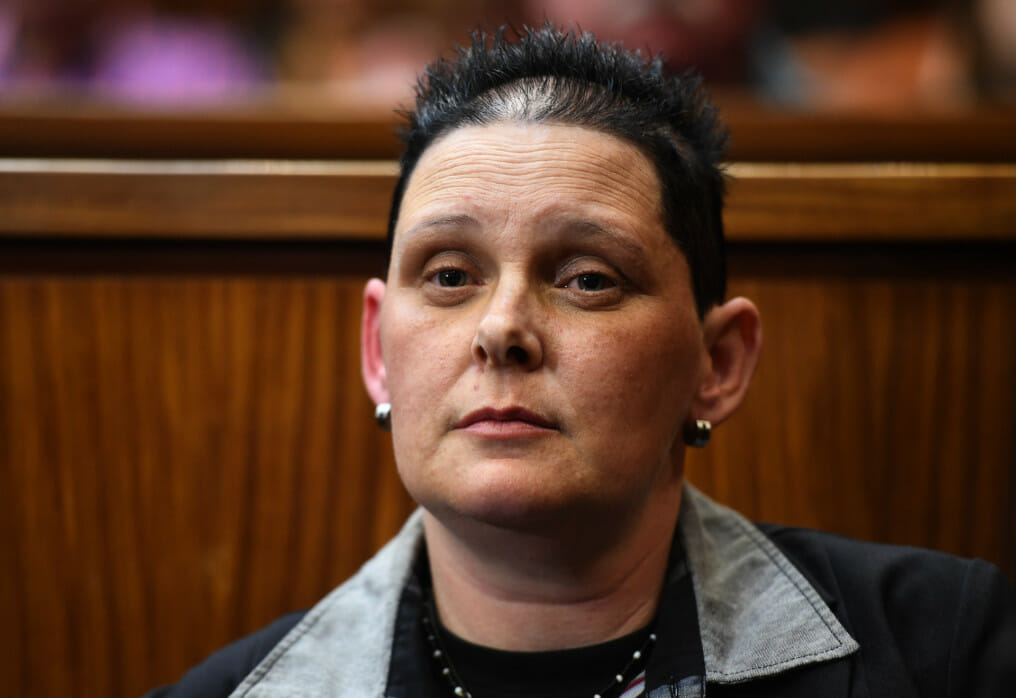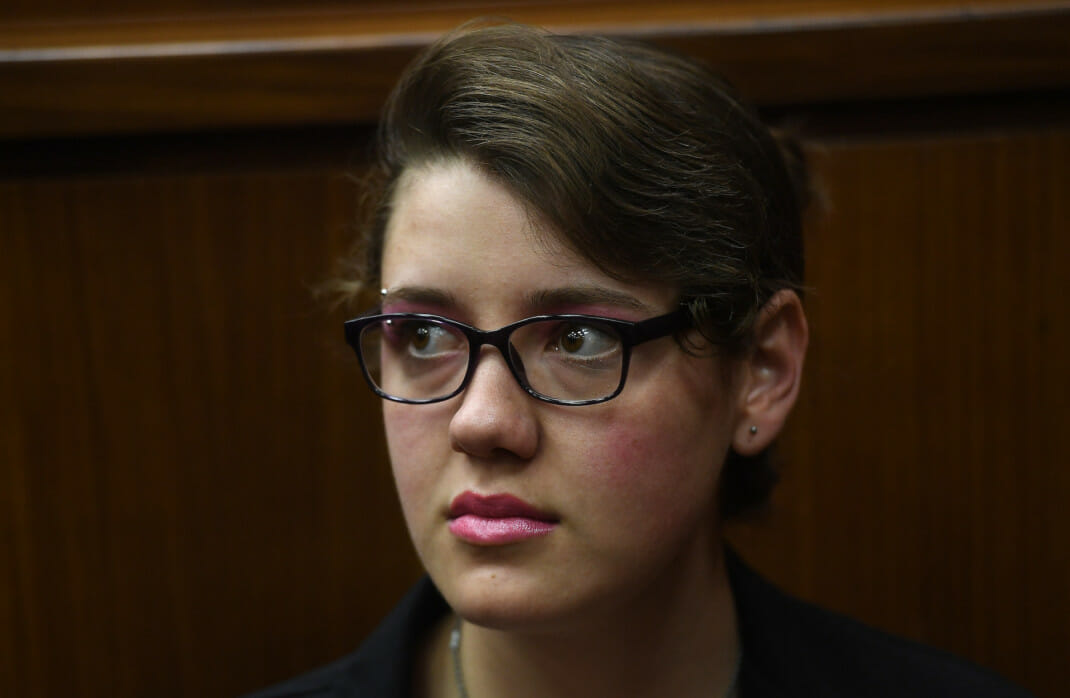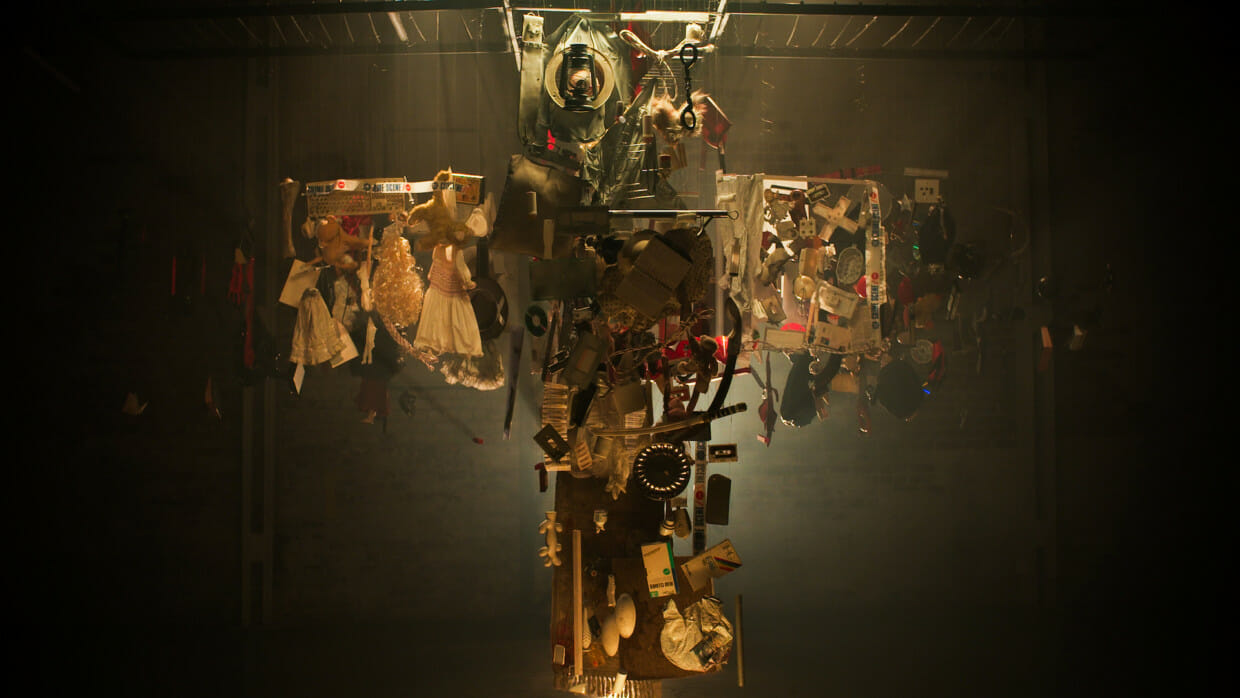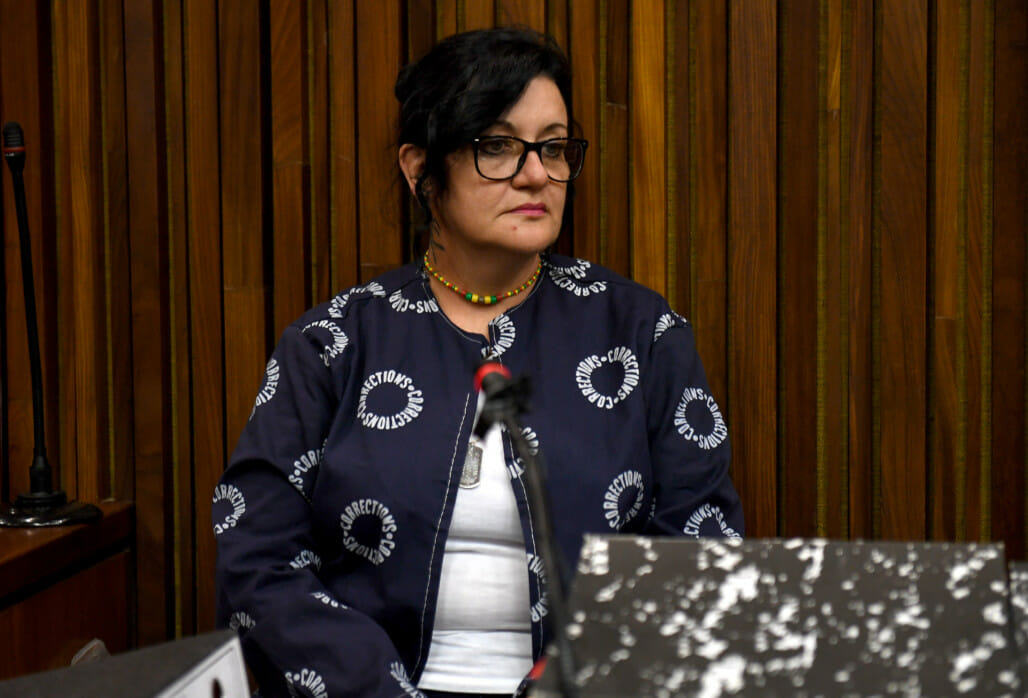
26 August 2021
Your questions about Devilsdorp, answered
Devilsdorp is a four-episode rollercoaster – but no matter how long it was, there would always be more questions. On Thursday, 19 August, viewers had a chance to get those questions answered in a Twitter Space hosted by journalist and series narrator Jana Marx. She was joined by Series Director David Enright and series co-creator and development producer Kristen Broberg, along with radio personality Refilwe Moloto and social media personality and fan Khaya Dlanga.
Warning: This article contains some spoilers for the documentary Devilsdorp, now streaming only on Showmax.
Listen to the full audio of the Devilsdorp Twitter Space here:
Was Cecilia a Satanist or was she a Christian?
Cecilia professed Christianity and said she was a recovered Satanist, said Jana. In reality, she wasn’t following either religion. Electus Per Deus was a cult and Cecilia used religion to manipulate people and convince them to kill people. She was a typical cult leader: ambitious, attractive personality, charismatic, intelligent.
A lot of South Africans would recognise the idea of “Satanic Panic”. Cecilia used this version of Satanism to tell her story and deceive people – she played into people’s fears of Satanism, said Kristen. How the community understood what Satanism is, and how moral panic played into that, and how Cecilia used that to advance her own ends are all part of the story, added David.
For the truth about Satanism, listen to the Devilsdorp Companion Podcast here or wherever you get your podcasts.
“What happened here is not strange. It could happen again.”
Jana Marx
How do you distill all those lives and emotions, and the facts, into four one-hour episodes for Devilsdorp?
Devilsdorp producer Kristen Broberg gave some insights into the research and development process for the show. “We kept in mind from the beginning that it’s not just a show, it’s not a story – these are factual events,” she said. “We decided not to answer everything and to leave some questions.”
With thousands of hours of footage, interviews and documents that could have been included, the team had to find the kernel of the story. This was the investigation and how the families and victims were affected. The team also had to take into account South Africa’s much stricter laws around filming and showing interrogations, as well as access to people in prison.
How did Cecilia manage to convince people to commit such crimes and to be so devoted to her? Was she charismatic or did she instill a level of fear?

Some of the most shocking footage in Devilsdorp is the filming of the so-called “high nights”. There’s about an hour of footage of these nights where Ria Grunewald and her followers tried to intervene as they believed Cecilia was being attacked by demons. “What’s exceptional is that it was actually filmed,” said David. Ria wanted evidence of how their prayers were saving someone’s life from demons; Cecilia, on the other hand, probably had a personal motivation: as a narcissist, she likely wanted to document how she had played them, said Jana.
Cecilia played in three parallels: her reality or truth, then there was the false reality that she created and then the perceptions of people around her and what they believed was real. It was like a game for her, said David.
The Devilsdorp team has had many questions about why interviews or viewpoints from the members of EPD weren’t included, especially Cecilia. David provided some fascinating insight into this: Cecilia is in complete denial about her actions, and has already given what should theoretically be her version of the truth in court, so the team didn’t feel that she would have any additional information to give that would have added value.
How could Cecilia’s husband not have known what was going on?
This was one of the most popular comments and questions – people just can’t believe that her husband, living in the same flat and being a police officer himself, wouldn’t have had an idea what was going on. Jana provided her perspective. “At the time of the investigation the police couldn’t find anything tying Cecilia’s husband to the killings and several people testified to this,” she said. Cecilia planned her “high nights” around her husband’s night shifts so he wasn’t home, and they didn’t share a bed or even a room.
What was the living situation at Cosanna Flats?
As is observed in the Devilsdorp documentary, when Cecilia had visitors, they would always sit in her bedroom, which was the main bedroom. Her husband would be sitting in the TV room playing games, and slept in his own room, which he shared with one of the children.
At different points, various members of the group stayed at the flat. Le Roux would sleep over to “protect” Cecilia from attacks, missing many days of school. Later, Marcel moved into the flat on a more permanent basis. This was after a few years where people including Candice Rijavec and Ria Grunewald took shifts as Cecilia had convinced them that she needed someone around all the time because of the attacks – which we now know weren’t real.
Jana related the strange story of how Marcel came to live with Cecilia. “Marinda felt she had this revelation. If you know the Old Testament, there’s a story where Hannah ‘gave’ her son Samuel to Eli, the high priest at the tabernacle. She felt the same thing that happened to her, and she was going to devote her daughter to Cecilia’s cause. So at the age of 14, Marcel had to move into the house and she was supposed to also “protect” Cecilia against evil, but basically became like a housekeeper. She looked after the children, she cooked, apparently did the laundry – she worked for Cecilia and stayed in her house. I have heard that it was a very irritating situation for Cecilia’s husband, that there were guests twenty-four-seven.”
It’s important to understand that there was a definite separation inside the flat, said David. Candice Ellison (the fiancée of murder victim Jarod Jackson) described the scene: Cecilia would be sitting on the bed as if she’s the queen and Marcel and Le Roux would sit on either side of the bed. There was a small single bed by the window where Marinda would sit and Zak would be off to the side. Cecilia’s husband would not even cross the threshold of the room, she said.
What happened to Ria Grunewald?
Ria fled with her life in tatters, said Jana. Although her location is known to Jana, it’s not something she’ll ever reveal as Ria still fears for her life. The team was obliged by a court order to blur her face – not that they would have wanted to jeopardise her new life. She lost everything, said Jana, and has just started over and can’t risk being linked to the story – who would employ her, for example? But on top of this, she feels extremely guilty about what happened and has to live with these events. She left the people she loved so she doesn’t endanger their lives anymore. She never killed anyone, observes Jana – these things just happened around her, but to keep her loved ones safe, she completely disappeared.
On top of that, said David, back in 2012 when the investigations into the first murders commenced, Ria was completely distraught but also considered a suspect. “That weighs heavily on her,” he said. “There’s a degree of embarrassment and fear around it. Even in the court case, she still seemed to believe some of Cecilia’s stories. She’s still living with that fear and it’s a difficult thing to heal from.”
Was Marcel indoctrinated into this? How could such an intelligent girl be convinced to take part in these terrible crimes?

Kristen understands the fascination with Marcel and her story. Marcel was indoctrinated to an extent, said Kristen. She had grown up in a certain way, and during that time changed from being a young person into a young adult. Many people ask how you could get six As in Matric but not know how to get out of a situation like this, and are torn about whether to feel empathy or compassion for someone who was raised this way and living in Cecilia’s flat since she was 14. The fact that she only cooperated so late in the trial casts a shadow of doubt on the motivation behind her eleventh-hour confession.
Did the wider culture in South Africa of believing in authority play into this story?
Before looking at society as a whole, you need to look at the religious environment many of the people in the story were raised in, says Kristen. In their community, respecting your elders is very important and disrespecting or disobeying is linked to punishment. That devotion to religion is an experience that many people in South Africa will identify with – that it’s very difficult to stand up to religious leaders without consequence, especially at a young age.
“The minute you say ‘God told me this’, there’s nothing the person can say to disagree with you,” observed Jana. “It’s a very dangerous thing.”
Marizka Coetzer, the journalist who later had a relationship with Le Roux, seemed so close to the case. Is there any evidence she was involved from the beginning?
Marizka is a Krugersdorp resident and she knew some of the people involved, but there’s no evidence that she knew anything of the crimes until she started investigating as a journalist, says Kristen.
Ilse van Dijk, Mikeila Valentine’s mother, was one of the most compelling people in the documentary. How did her involvement come about?
Ilse van Dijk’s story showed how raw and emotional these horrendous events are for the family members, said David. What’s unique about Mikeila Valentine is that she was both part of Electus Per Deus in the early days and then also sadly a victim. David spoke of the many meetings and phone calls it took to establish trust with Ilse, who opened up about how she made peace with what happened.
“She even says she’s glad her daughter is dead – which is a shocking statement to hear from a mother who lost her daughter, but she found peace in the fact that her daughter’s not alive to be involved in the rest of the murders and not going through the trial which is also traumatic for family members in itself,” he said.
What’s happening with the case against Colonel X?
Jana confirmed that Colonel X cannot be named yet as he is at the centre of an investigation involving him and three other cops. The charges being investigated include defeating the ends of justice and being an accessory after the fact, which means it’s alleged that these cops helped to cover up the crime and probably benefited from it.
SAPS’ own anti-corruption unit did an investigation, and a docket has been referred to the DPP (the regional office of the NPA) to decide if the case is strong enough to prosecute. According to the NPA, they require more evidence before making a decision on whether to prosecute.
David added they filmed a second version of Devilsdorp that includes Colonel X’s name, which would have been aired if the case against him had gone to court.
Devilsdorp tells us that Zak Valentine and others deposited money every month in Cecilia’s account, ostensibly to support an orphanage in the USA for the children of Satanists. What happened to the money?
Jana points out that there is a very poor paper trail because Cecilia preferred to operate in cash. Zak would deposit the money, and she would draw it and keep it in her house. She couldn’t spend the money on luxuries because it would have exposed her lie about the orphanage. Jana also introduced the fact that the cult members used a large amount of drugs, and Cecilia was a huge party animal who enjoyed spending money in clubs.
Did Shane Chatzkelowitz, the insurance forensic investigator who looked into the life insurance claim for Zak Valentine, ever fear for this life during the interview with Cecilia featured in Devilsdorp?
An ex-SAPS officer, Shane is an experienced investigator. “When you meet him,” says David, “you realise he wasn’t scared at all. He was in control of that conversation the whole time.”
What role did Cecilia’s husband and two kids play? Did they see all this happening?
The conversation circled back to this key question. Jana confirmed that, according to available evidence, her husband was never present when these things happened. “The children is another tragic story,” she says. “When these things happened, the little one was about one or two and the other one was about four or five so obviously they were at home during the day. We have horrific footage that we didn’t include in the documentary where the children are sitting on the bed and Cecilia is falling down having fits and fake seizures. They were there, they witnessed everything. It’s extremely tragic.”
Where is Captain Ben Booysen now?
This police officer of 42 years was a pivotal character in the documentary, and we see him retiring from the force in an emotional scene. “The serial killers would never have been caught if it wasn’t for him,” says Jana. Captain Booysen is a former member of the Hawks, and is married to a colonel in the police force, Colonel Christelle Booysen.
“There’s a difference between a police officer who does it as a job, and those who do it as a vocation.”
Jana Marx
What was the symbolism of the B-roll or cutaway devices used during Devilsdorp?

David, the director, detailed the thought process behind the knives and objects hanging on strings that appear at key moments in the documentary. “From the beginning we didn’t want to go the standard route of recreation, but we understood that we needed to fill in a certain level of texture,” he said. They tried to keep it true to the story: for example, the knife is similar to one used in some of the murders.
“The art installation that transitions from different perspectives was what we called the marionette that we created in a warehouse. It was a mini universe of this world that they created. There was, for example, a marionette symbol tattoo on Le Roux’s neck and people mentioned that Cecilia used these people as puppets.”
Why is Mr X’s identity still protected?
It’s not often that state witnesses are truly terrified to testify, said Jana, but in this case both Ria and Mr X feared for their lives. While he’s no longer in witness protection, there is a court order preventing anyone from identifying him. David pointed out that they could have challenged the order, but felt ethically bound not to.
What was it like having Marinda Steyn as a teacher?

The Space was joined by one of Marinda’s former students who remembers her as her English teacher in high school around 2007-2008. “She wasn’t always pleasant, but she seemed to be very free-spirited and opinionated. She had a very strong personality, so if you were a kid with a strong personality, you’d go head to head with her. She seemed to like that.”
Are Marinda and Cecilia Steyn related?
The former student noted that Marinda Steyn was at some point Marinda Koekemoer and then the name Hugo. They are not family, confirms Jana. Marinda married three times, and at different times adopted the names of her husbands, but later changed back to her maiden name, Steyn.
How can we make sense of Marinda Steyn’s actions towards her children? Did she resent them because of a failed marriage?
“I don’t think she didn’t love her children,” says Jana. “She was totally blinded by her loyalty to Cecilia.” As shown in the documentary, a turning point in the case was when Le Roux decided to turn state’s witness after seeing his mother’s will, which disowned him and Marcel and left everything to Cecilia.
Jana added some more details to the story: Marinda had told her children she would get them out of jail by suing the police for R1 million for wrongful arrest. The claim didn’t hold water and the moment Le Roux realised they had been set up, the whole story changed.
Watch Devilsdorp only on Showmax, and listen to the official Companion Podcast for even more details on this riveting story.
The Mommy Club NBO now streaming
The Chocolate Empire, now streaming
The best movies to stream

10 Women’s Month movies in the spotlight
Want a night-in that’s all about women’s friendships, careers, dreams and schemes? We’ve picked 10 movies that are watch-now or worth-the-wait this Women’s Month.

Here, and 15 more great movies to cry about
Whether you’re looking to shed happy tears or shed part of your soul, we have movies centred on love in all its forms to help you, starting with Tom Hanks and Robin Wright’s Here.

The best kids’ shows and movies to stream during school holidays
Showmax has loads of fun to look forward to during school holidays in June/July 2025, including blockbuster movies for the whole family.

Elphaba and Glinda’s Wicked little guide
Find out what Cynthia Erivo and Ariana Grande have to say about Wicked, pick up 10 magical behind-the-scenes facts, and explore 7 more schools of witchcraft and wizardry.
